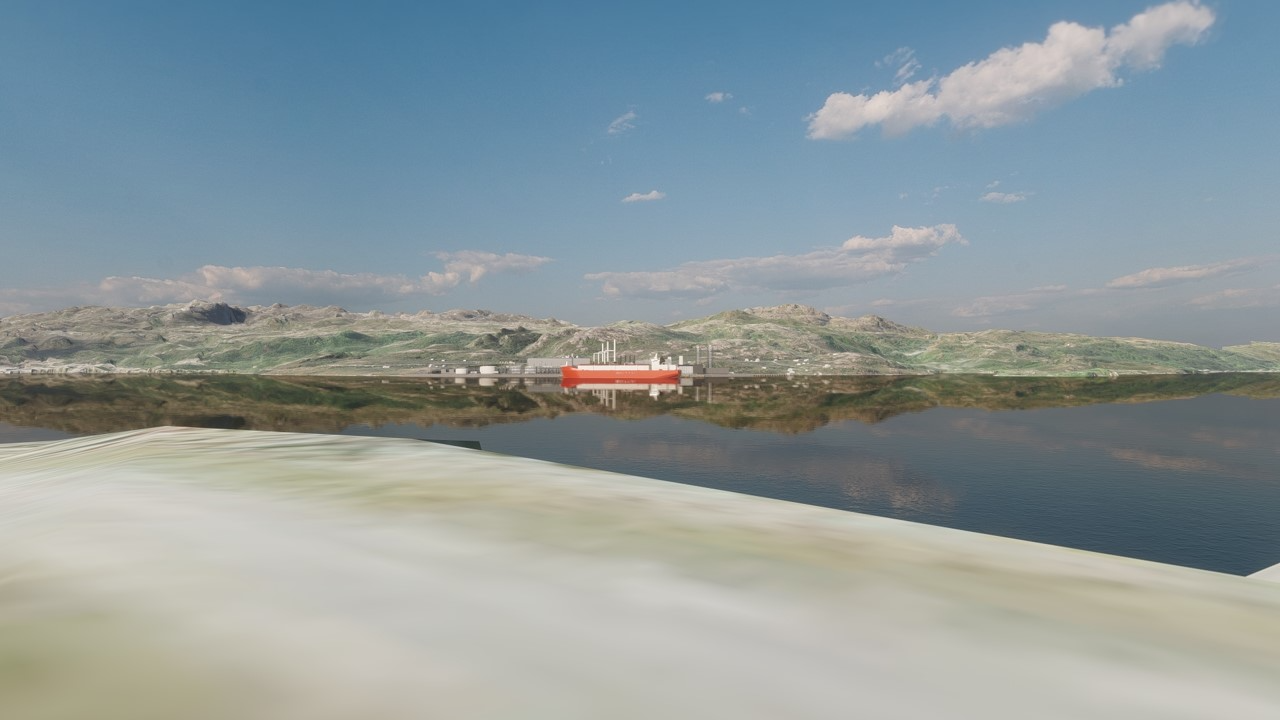Europe’s first large-scale clean ammonia plant
Barents Blue
Barents Blue will be a plant for large-scale production of clean ammonia, featuring a record-low carbon footprint. Good access to natural gas and renewable power is one of the things that gives Norway very good conditions for this type of industry.
Key facts
Location
Markoppneset, Finnmark, Norway
Annual production
1 million tonnes
Gas supply
Melkøya plant
Technology
Auto-thermal reforming(ATR)
End product
Clean ammonia
CO2 storage
Polaris, offshore Finnmark
Carbon capture rate
Above 99 % overall capture rate
Energy efficient
About 30 MMBtu of natural gas per ton clean ammonia

Ammonia from the Barents Blue plant will be produced with associated carbon capture and storage in Polaris. Clean, liquid ammonia is easy to transport in large quantities, and will, among other things, help cut large emissions in shipping. The estimated demand for pure ammonia in 2050 is 530 million tonnes.
The Barents Blue project has high ambitions for sustainability and the environment and will pioneer clean ammonia production. The overall goal is to be the most carbon-efficient clean ammonia plant globally.
We are realizing the Barents Blue project as a climate project with large impact on negative emissions and producing clean fuel on global scale.
We will deliver 1 million tonnes of clean ammonia, and it will be the most energy efficient blue ammonia plant in the world with a record-low carbon footprint and well aligned with the EU taxonomy.
The project will have large-scale value creation in the Northern region. Creating several hundred jobs directly to the facility and increased activity in the supplier marked, Barents Blue is an important project to facilitate the development of a low-carbon industry in Northern Norway.
The demand for low-carbon solutions and clean ammonia is increasing as the European market and the EU now are strengthening their efforts to develop value chains for both blue and green ammonia.
The Barents Blue project has received state aid to participate in Important Projects of Common European Interest (IPCEI) Hydrogen Program, also known as Hy2Use.
What is clean ammonia?
What is the difference between hydrogen and ammonia? What differs blue ammonia from green, and why will clean ammonia help cut large emissions in shipping when used as fuel?
We get that it’s complicated.
The most important thing to know is that Horisont Energi has an overall goal to have the most carbon-efficient clean ammonia plant globally. Read more here if you’re interested in learning more about clean ammonia.


